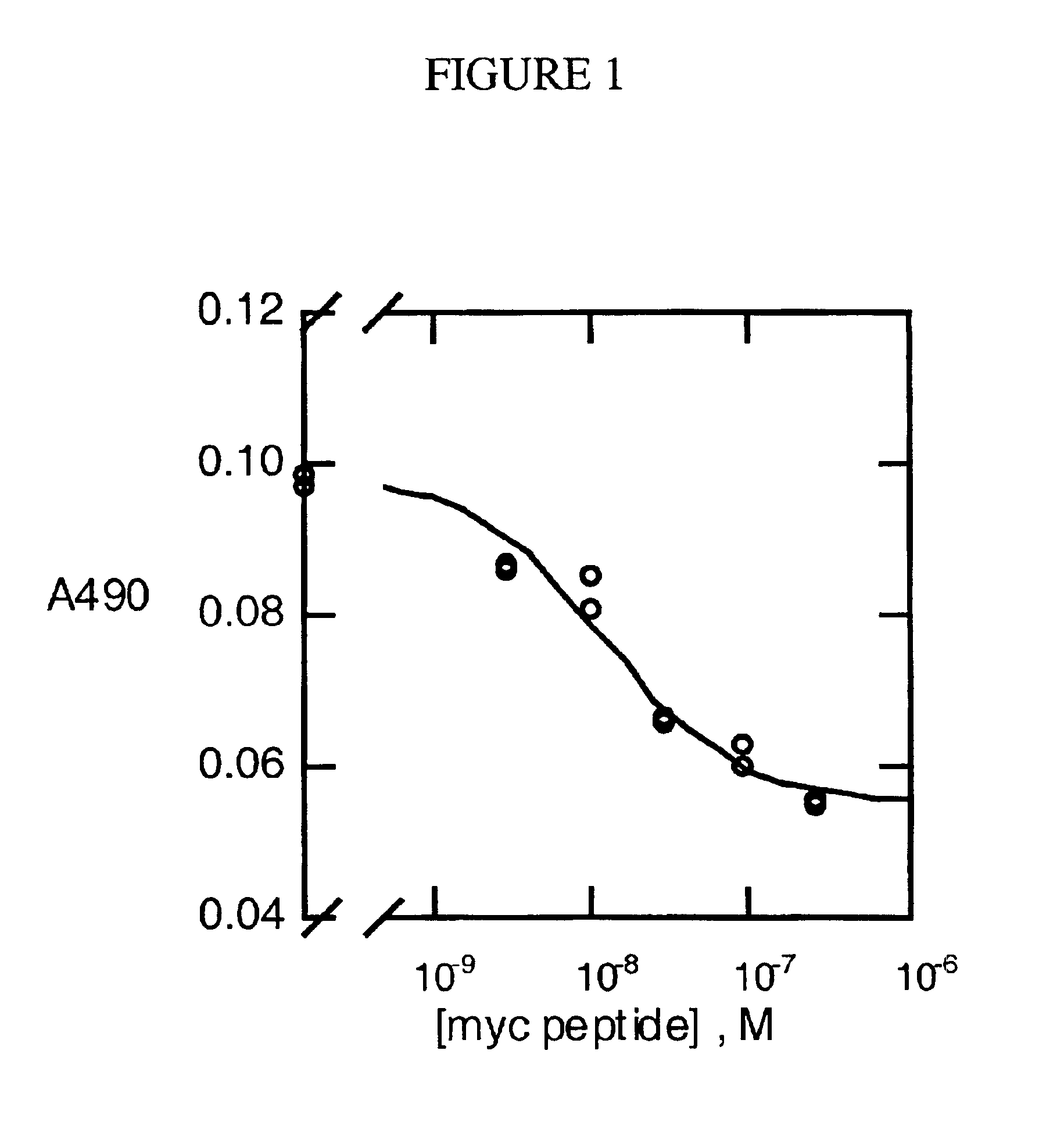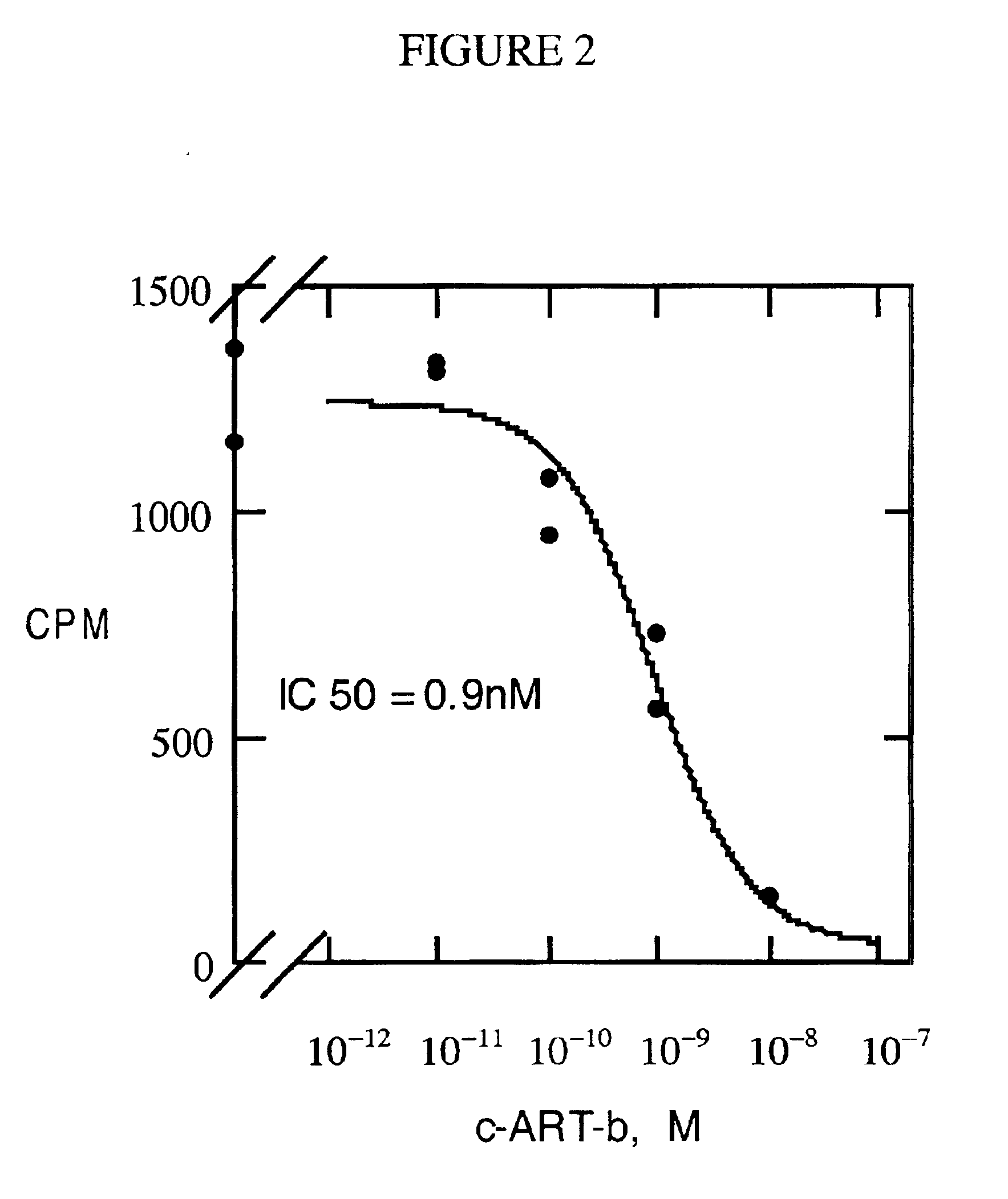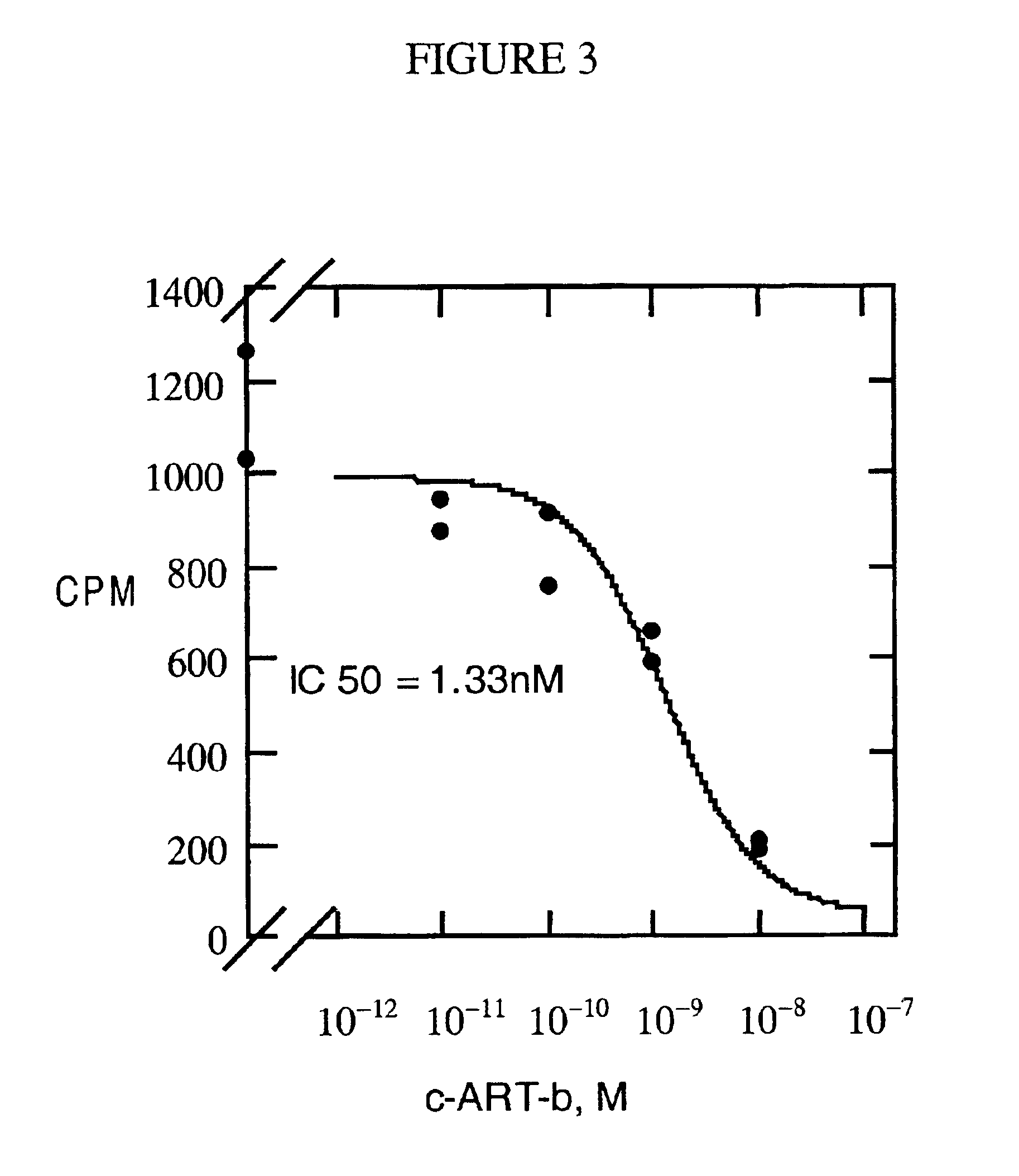C-terminal region of agouti-related transcript (ART) protein
- Summary
- Abstract
- Description
- Claims
- Application Information
AI Technical Summary
Problems solved by technology
Method used
Image
Examples
example 2
Expression of c-ART-b
COS-7 cells in T-175 flasks were transiently transfected with the c-ART-b expression plasmid (24 .mu.g) by lipofectamine (Gibco), and grown in Opti-mem media (Gibco) supplemented with 1% fetal bovine serum. Two days after transfection, culture media were collected, centrifuged to remove residual cells, concentrated about 100-fold in Centriprep-3 (Amicon) and stored at 4.degree. C. in the presence of 2.5 mM EGTA, 4 mg / ml leupeptin, and 0.01 mM phosphoramidon. After determination of the concentration of c-ART-b, NaN.sub.3 was added to 0.02%. Determination of the concentration of c-ART-b, which contains the Myc sequence, was based on an ELISA standard curve. Briefly, the microtiter plate was coated with 0.2 .mu.g of a Myc peptide (human c-Myc 408-439) overnight, washed, blocked, and followed by incubation with anti-Myc mAb-HRP conjugates (Invitrogen) in the presence of varying concentrations of the fire Myc peptide for 2 hours. The bound mAb-HRP was detected using ...
example 3
Binding of c-ART-b to MC3R and MC4R
Binding assays were done in the same manner as described in Fong et al., 1997, Biochem. Biophys. Res. Comm. 237:629-631. Binding assays were carried out using membranes prepared from L cells or CHO cells stably expressing human MC3R, MC4R or MC5R. The binding assay mixture contained 0.2 nM of .sup.125 I-[Tyr.sup.2 ][Nle.sup.4, D-Phe.sup.7 ] .alpha.-melanocyte stimulating hormone (.sup.125 I-NDP-.alpha.-MSH), varying concentrations of c-ART-b or full-length ART protein, and an appropriate amount of membranes so that the total bound radioligand was less than 10% of the added radioligand. The above mixture in binding buffer (50 mM Tris, 2 mM CaCl.sub.2, 1 mM MgCl.sub.2, 5 mM KCl, pH 7.2) was incubated at room temperature for 2 hours, followed by filtration through GFC paper. The bound ligand was quantitated in a .gamma. counter. IC.sub.50 values were calculated as previously described (Fong et al., 1996, Mol. Pharmacol. 50:1605-1611). The results are ...
example 4
Functional Assay for the Binding of c-ART-b to MC3R and MC4R
The ability of c-ART-b to inhibit the production of cAMP by .alpha.-melanocyte stimulating hormone acting through MC3R or MC4R can be demonstrated by preincubating L Cells stably expressing human MC3R or MC4R with c-ART-b for 10 minutes, followed by incubation with 20 nM .alpha.-melanocyte stimulating hormone for 45 minutes. The incubation buffer also contains Earle's balanced salt solution, 10 mM HEPES, 5 mM MgCl.sub.2, 1 mg / ml BSA and 0.5 mM IBMX. -Following the incubation, cells are lysed by boiling for 4 minutes. Intracellular cAMP concentration is measured by RIA (Huang et al., 1997, J. Receptor Signal Transduc. Res. 17:599-607) using anti-cAMP antibody and .sup.125 I-cAMP as modified in the scintillation proximity assay format (Amersham).
The present invention is not to be limited in scope by the specific embodiments described herein. Indeed, various modifications of the invention in addition to those described herein ...
PUM
| Property | Measurement | Unit |
|---|---|---|
| Dispersion potential | aaaaa | aaaaa |
| Concentration | aaaaa | aaaaa |
| Acidity | aaaaa | aaaaa |
Abstract
Description
Claims
Application Information
 Login to View More
Login to View More - R&D
- Intellectual Property
- Life Sciences
- Materials
- Tech Scout
- Unparalleled Data Quality
- Higher Quality Content
- 60% Fewer Hallucinations
Browse by: Latest US Patents, China's latest patents, Technical Efficacy Thesaurus, Application Domain, Technology Topic, Popular Technical Reports.
© 2025 PatSnap. All rights reserved.Legal|Privacy policy|Modern Slavery Act Transparency Statement|Sitemap|About US| Contact US: help@patsnap.com



